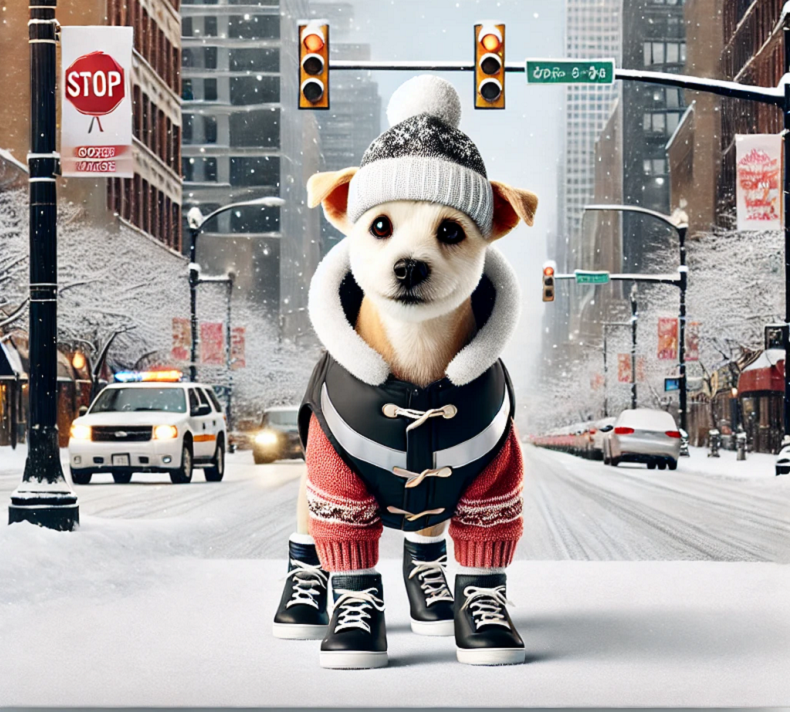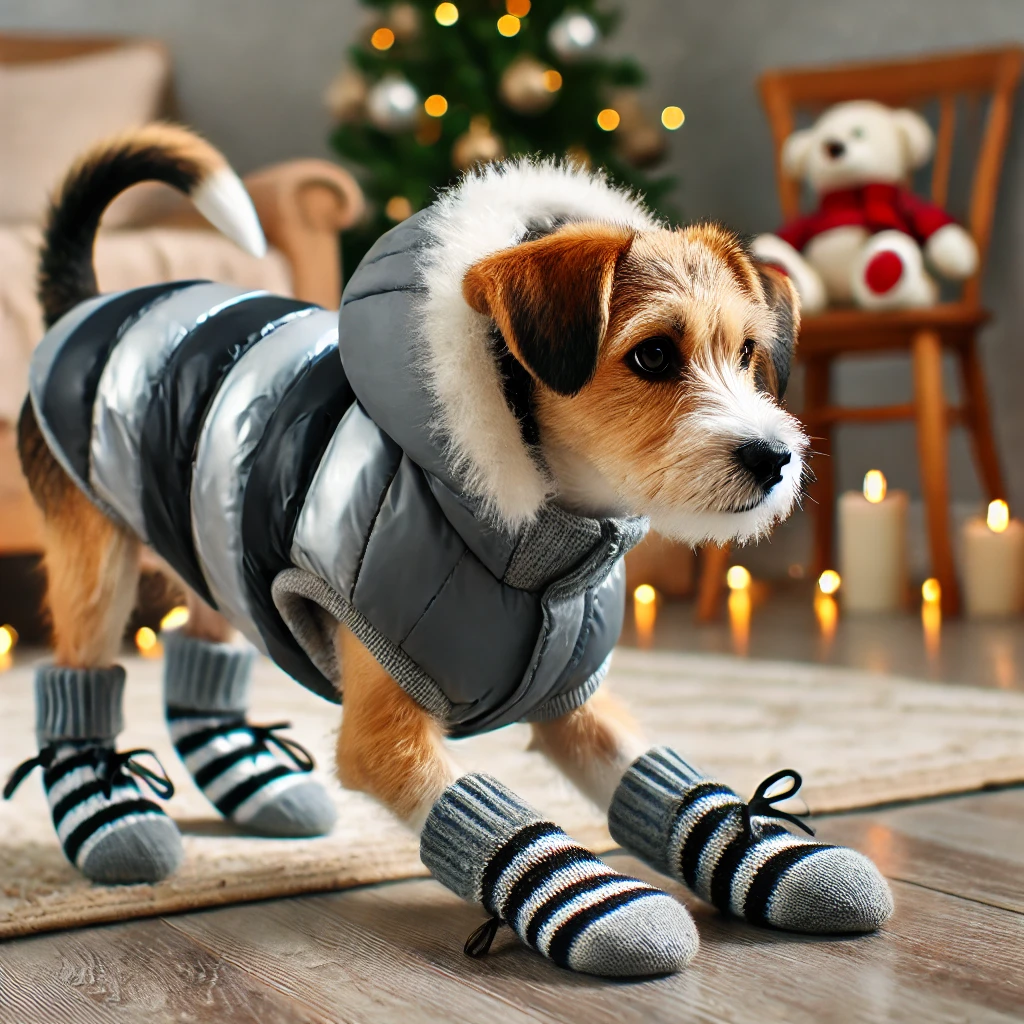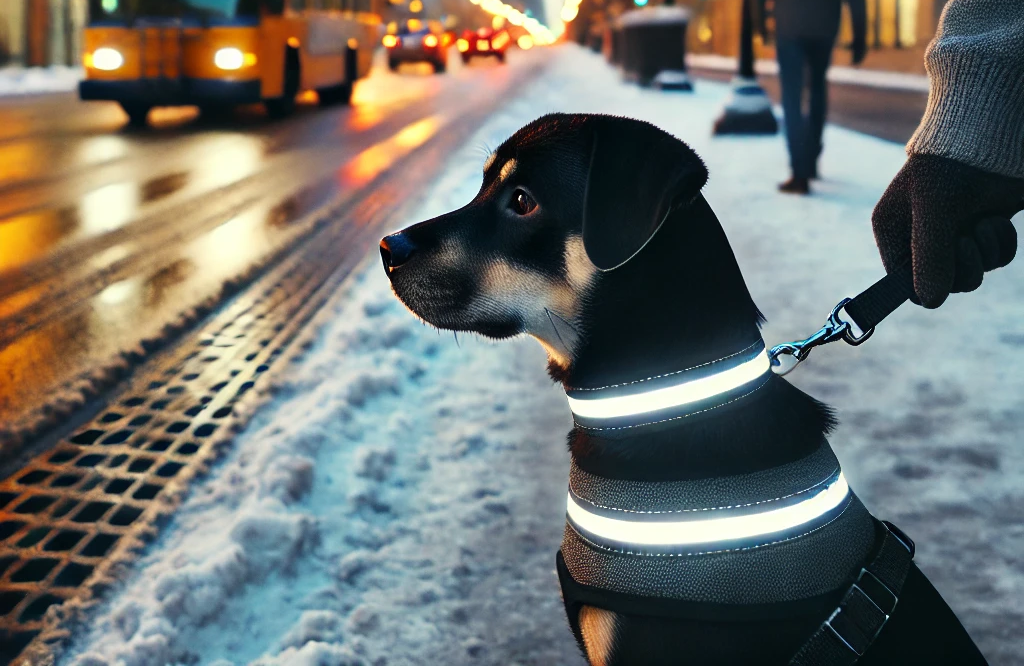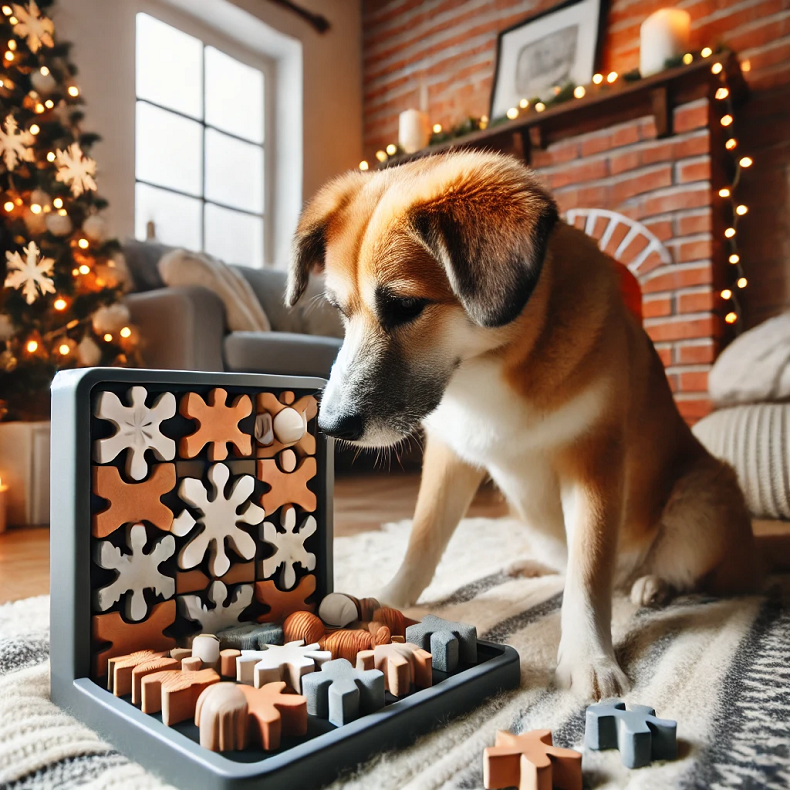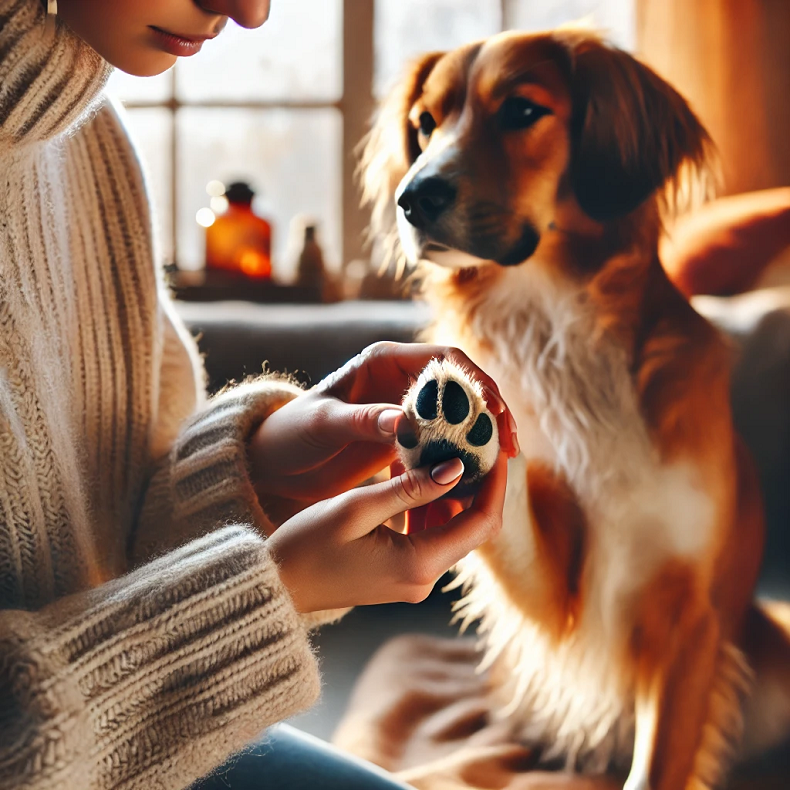Preparing Your Dog for Winter in Chicago: Essential Tips for Cold Weather Care
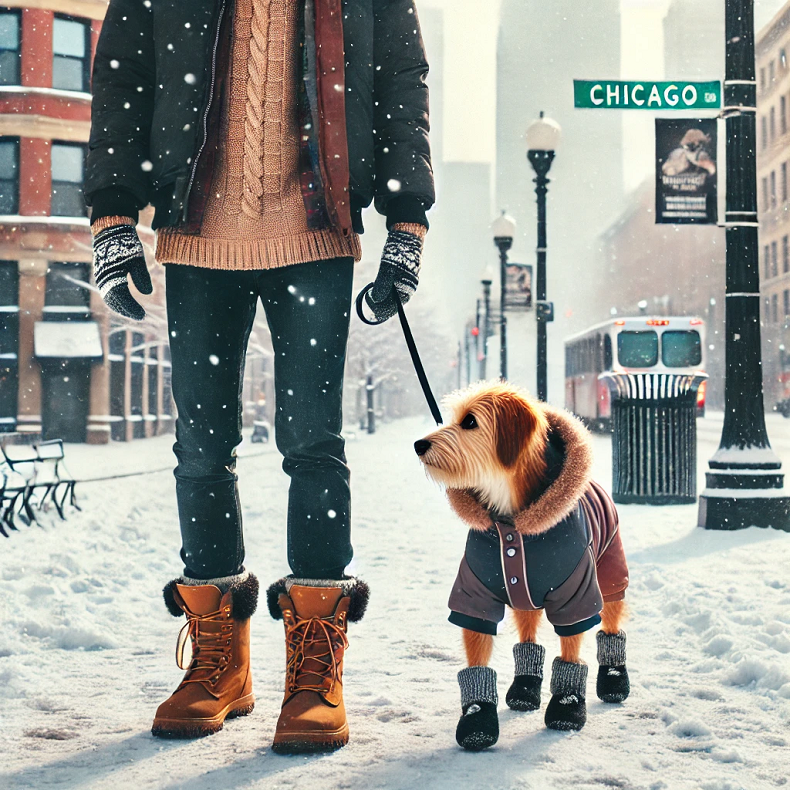
Chicago winters can be brutally cold. Just like humans, dogs need extra care to stay safe and comfortable during these chilly months. Urban dog owners face unique challenges, from icy sidewalks to bitter winds. With the right preparation, your dog can enjoy winter to the fullest. This guide will walk you through essential winter care tips for your dog, including winter gear, safe walking practices, indoor exercise options, grooming considerations, and health monitoring to help your pup thrive in the Windy City.
Understanding Your Dog’s Winter Biology
The canine body is a masterpiece of adaptive biology, but its responses to cold weather are more complex than most people realize. Your dog’s ability to handle winter conditions depends on dogs sophisticated physiological systems that work together to maintain their core body temperature. For example, double-coated breeds like Huskies have a dense undercoat that provides insulation, while short-haired breeds can lose body heat much more rapidly. Understanding these breed-specific differences can help you make better decisions about winter care, such as whether your dog needs additional gear or shorter walks. For more information on how dogs’ bodies adapt to cold weather, see this article from Science News Explores.
Essential Winter Gear for Dogs
Keeping your dog warm is crucial during the winter. Investing in quality winter gear can make all the difference in your dog’s comfort. Here are some essentials:
- Dog Coats: Depending on your dog’s breed and size, a coat may be necessary to protect them from extreme cold. Short-haired breeds like Boxers or smaller dogs like Chihuahuas need an extra layer to retain body heat effectively. Make sure the coat is snug but not restrictive, and opt for waterproof materials to keep your dog dry. For urban environments like Chicago, coats with reflective strips are ideal for visibility during evening walks.
- Booties for Paw Protection: Salt and de-icers can harm your dog’s paws. Protect their feet with comfortable, well-fitted booties. If your dog isn’t used to wearing booties, practice indoors to help them get accustomed to the feeling. Alternatively, use paw balms or protective waxes to add a layer of protection from harsh chemicals and ice. Look for booties with non-slip soles to help prevent slipping on icy sidewalks.
- Reflective Gear: With shorter daylight hours, reflective gear is essential for both you and your dog during evening walks. Reflective collars, leashes, or jackets can improve visibility and help keep you both safe on Chicago’s busy streets. In an urban setting, visibility is key to avoiding accidents with vehicles or cyclists.
Safe Walking Practices for Winter
Winter walks can be refreshing, but it’s important to take extra precautions. Here are some tips for keeping your dog safe on walks:
Time Your Walks Wisely: When temperatures drop, plan walks during the warmest part of the day to reduce cold stress. This helps reduce the risk of frostbite or hypothermia. In Chicago, this typically means late morning or early afternoon, when the sun is at its highest.
Choose Your Routes Carefully: Stick to plowed paths and avoid icy sidewalks to prevent slips and falls. Salted areas can irritate your dog’s paws. Rinse their feet after walks to remove any salt or chemicals. Consider less-trafficked routes to avoid crowded, slippery sidewalks.
Shorter, More Frequent Walks: Instead of long walks, consider taking shorter, more frequent outings. This allows your dog to get fresh air and exercise without prolonged exposure to the cold. Urban environments can be harsh due to wind tunnels between buildings. Keeping walks brief helps protect your dog.
Indoor dog Exercise Options
When the weather outside is frightful, keeping your dog active indoors is essential. Here are some ideas for indoor exercise that work well for urban living:
- Interactive Toys: Puzzle toys and treat-dispensing toys keep your dog mentally and physically stimulated. These toys are especially useful when outdoor walks are limited. For urban dwellers, toys that require minimal space but offer maximum engagement are ideal.
- Tug-of-War and Fetch: Use a soft toy for a game of tug-of-war or fetch in a hallway or a spacious room. Clear the area of obstacles to prevent accidents. In small apartments, consider using soft, lightweight toys to avoid damaging furniture.
- Stair Climbing: If you have stairs in your home or building, supervised stair climbing can be a great way for your dog to burn off some energy. It’s an effective way to get some cardio indoors. However, be mindful of your dog’s joints, especially if they are a senior or a larger breed.
Grooming Considerations for Winter
Proper dog grooming is vital during the winter months to maintain your dog’s health and comfort:
- Keep Their Coat Clean and Dry: Wet fur can lead to chills. Always dry your dog thoroughly after walks, especially if they’ve been playing in the snow. A clean, well-maintained coat provides better insulation. In urban areas, drying your dog also helps remove pollutants and salt residue.
- Trim Paw Hair: Trimming the hair around your dog’s paws can help prevent ice balls from forming between their toes, which can be painful. Ice balls are more common on salted sidewalks. Trimming can significantly improve your dog’s comfort.
- Moisturize Paws: The cold weather and salt on sidewalks can dry out your dog’s paw pads. Use paw balm to keep them moisturized and prevent cracking. Regular moisturizing is especially important for urban dogs that frequently walk on salted pathways.
Health Monitoring and Diet Adjustments
Winter conditions can affect your dog’s health in various ways, so it’s important to monitor their well-being:
- Watch for Signs of Cold Stress: Shivering, whining, and lifting paws off the ground are signs that your dog is too cold. If you notice these signs, bring your dog inside immediately. In Chicago, wind chill can make temperatures feel much colder, so be extra vigilant.
- Adjust Their Diet: Dogs may need extra calories during the winter to help maintain their body heat, especially if they are spending time outdoors. Talk to your vet about adjusting your dog’s diet if needed. Add more protein to support energy levels during colder months.
- Hydration is Key: Dogs can become dehydrated just as easily in winter as in summer. Make sure your dog has access to fresh water, and check that outdoor water bowls are not frozen. Indoor heating can dry out the air. Ensure your dog drinks enough water throughout the day.
Socialization and Indoor Play at K9U Chicago
Winter can be a challenging time for dog owners in Chicago, but K9U Chicago offers an excellent solution. Our indoor daycare services provide a safe and engaging environment for dogs to socialize and play, even when it’s too cold outside. With spacious play areas, your dog can run, play, and interact with other dogs under trained supervision. This is an ideal option for busy owners or those living in small apartments who may not have the space for active indoor play. K9 University Chicago has one of the largest inside dog play areas in the city.
At K9U, we also offer structured indoor activities that keep dogs physically and mentally stimulated. These activities are tailored to fit the needs of urban dogs who may not get enough exercise during winter. Our experienced staff ensures each dog gets personalized attention in a safe environment, making K9U ideal for maintaining your dog’s socialization and activity levels throughout winter.
Be Proactive this Year With These Winter Dog Care Tips
Preparing your dog for winter in Chicago requires thoughtful planning, from investing in the right winter gear to creating indoor exercise opportunities and keeping a close eye on their health. With the right care, your dog can stay safe, healthy, and happy throughout the cold months. For more support, consider K9U Chicago’s daycare and indoor play services to help your dog thrive during winter. Reach out to us today to learn more about how we can make this winter enjoyable for your furry friend.
Common Questions we get about Dog Care During Chicago Winters
What type of coat is best for my dog during winter in Chicago?
A well-fitting, waterproof winter coat is essential for your dog during the Chicago winter. Look for coats that are snug but not restrictive, with coverage for the chest and back. For short-haired or small breeds, coats with additional insulation are ideal to help retain body heat. Breeds like Chihuahuas, Boxers, and Greyhounds benefit most from thicker coats, whereas double-coated breeds may need lighter layers for particularly cold days. Reflective strips are also recommended for visibility during evening walks in the city.
How can I protect my dog’s paws from salt and ice?
Protecting your dog’s paws is crucial in winter. Salt, ice, and chemical deicers can cause irritation, burns, and discomfort. Here are several methods to keep your dog’s paws safe:
- Booties: Comfortable, well-fitted booties provide the best protection for your dog’s paws from salt, ice, and cold surfaces. Practice indoors to get your dog used to them before venturing out.
- Paw Balm: If your dog doesn’t tolerate booties, apply a paw balm before walks to create a protective barrier against salt and chemicals. Reapply after walks to soothe any irritation.
- Protective Waxes: Products like Musher’s Secret are protective waxes specifically formulated to create a semi-permeable shield on your dog’s paws, providing an alternative to booties.
- Rinse and Dry: After walks, rinse your dog’s paws with warm water to remove salt and chemicals, and dry them thoroughly to prevent irritation or infection.
- Paw Washing Station: Set up a small paw washing station at home with a basin of warm water and a clean towel to make rinsing your dog’s paws easier and more consistent after every walk.
- Paw Trimming: Trim the hair between your dog’s paw pads to prevent ice balls from forming, which can be painful and make walking difficult.
Is it safe to take my dog for walks during extremely cold weather?
Walking your dog during extremely cold weather can be safe if precautions are taken. Limit walks to the warmest part of the day, typically late morning or early afternoon. Dress your dog in appropriate winter gear, including a coat and booties. Keep walks shorter—around 10-15 minutes—and watch for signs of discomfort such as shivering or lifting paws off the ground. If the temperature or wind chill is dangerously low, consider skipping the walk and opting for indoor play instead to keep your dog safe from frostbite and hypothermia..
Where can I find pet-friendly indoor spaces in Chicago?
Chicago has several pet-friendly indoor spaces where you can keep your dog active during winter. Consider taking your dog to local indoor dog parks, such as Wiggly Field Dog Park (indoor location), or K9U Chicago, which offers indoor play areas. Many Chicago pet stores also host events that allow dogs to socialize indoors. Check with local facilities and always call ahead to confirm their pet policy.
How do I handle my dog’s behavior when we’re stuck indoors for long periods?
Long indoor periods can make dogs restless. To manage your dog’s behavior, provide plenty of mental stimulation. Puzzle toys, treat-dispensing toys, and training exercises can help engage your dog’s mind. You can also try rotating toys to keep things interesting. Physical activity, like supervised stair climbing or playing fetch in a safe space, can also help burn off energy. Setting a schedule for indoor activities can create a routine that keeps your dog entertained.
Are there any local Chicago organizations that help with winter pet safety?
Yes, there are several organizations in Chicago dedicated to pet safety and well-being. PAWS Chicago is a great resource for pet owners, providing winter care tips and support services. The Anti-Cruelty Society also offers educational resources and even supplies like coats and booties for pets in need. Reach out to these organizations if you need assistance or advice on winter pet safety.


